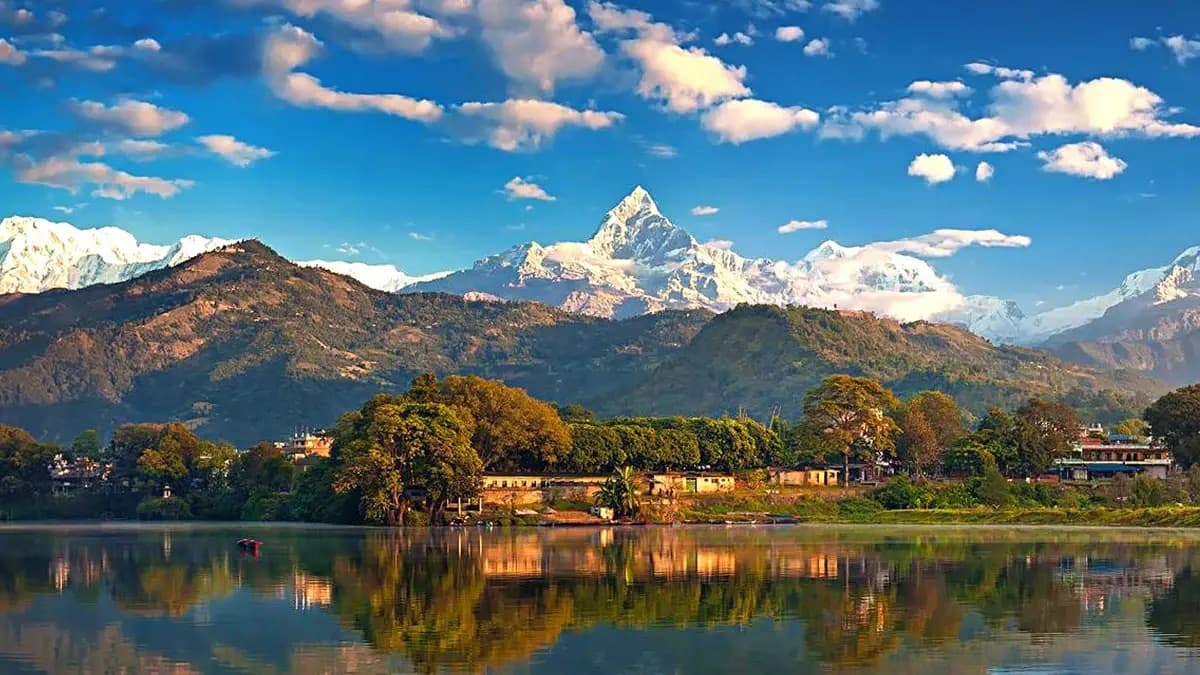Pokhara, Nepal: More Than a Gateway – The Ultimate Travel Guide
Introduction: The City That Whispers
If Kathmandu is Nepal’s thrilling, chaotic heartbeat, then Pokhara is its tranquil soul. For decades, this city has been famously known as the "Gateway to the Annapurnas," the essential launchpad for some of the world's most legendary treks. But to label it merely as a starting point is to miss its profound essence. Pokhara is not a place you pass through; it's a place you feel.
Imagine a place where emerald lakes perfectly mirror snow-capped giants, where the morning air is filled with the silent, colorful dance of paragliders, and where the pace of life moves to the rhythm of lapping water and temple bells. This is Pokhara. It’s a unique blend of breathtaking natural grandeur and laid-back charm, a sanctuary where adventure and relaxation coexist in perfect harmony.
This ultimate guide to traveling in Pokhara is your deep dive into everything that makes this city magical. We’ll move beyond the postcard views to uncover hidden caves, serene sister lakes, and the rich culture that gives this destination its soul. Consider this your comprehensive toolkit for planning an unforgettable journey.
Understanding Pokhara – The Lay of the Land and Spirit
Before we explore the "what" and "where," it's crucial to understand the "why." What is it about Pokhara that captivates so completely?
A Landscape Forged by Giants
Pokhara’s magic begins with its geography. Situated in the Gandaki Province at an elevation of approximately 827 meters (2,713 feet), the city rests in a lush valley that was once, geologically speaking, a massive prehistoric lake. As the waters receded over millennia, they left behind the stunning basins that now hold Phewa Tal, Begnas Tal, and Rupa Tal.
But the city's true drama lies in its backdrop. To the north, the land doesn't just rise—it explodes skyward into the Annapurna Mountain Range. This isn't a distant silhouette; it's an immediate, awe-inspiring presence. The iconic, fishtail-shaped summit of Machhapuchhre (Fishtail Mountain) dominates the view, flanked by the colossal peaks of Annapurna I, II, III, IV, and the distant Dhaulagiri. This dramatic topography creates a microclimate and a sense of scale that is both humbling and exhilarating.
A Tapestry of Culture and People
The beauty of Pokhara is not just in its landscapes but in its people. The city is a vibrant mosaic of ethnic groups, primarily the Gurung and Magar communities, known for their rich traditions and as the famed Gurkha soldiers. Their hospitality is the bedrock of the local trekking industry. You'll also find Brahmin, Chhetri, and Newar communities, each adding their unique threads to the cultural fabric through festivals, cuisine, and daily life.
A significant chapter in Pokhara's modern history was written in the 1950s and 60s with the influx of Tibetan refugees. They brought with them a profound spiritual heritage and exquisite craftsmanship, particularly in carpet weaving, which remains a vital part of the local economy and cultural identity.
From Trade Route to Tourist Haven
Pokhara's evolution from a sleepy stop on the India-Tibet trade route to a world-class tourist destination is a fascinating story. The pivotal shift began in the 1970s with the opening of the Annapurna Circuit to international trekkers. These early adventurers found in Pokhara the perfect basecamp—a place with a milder climate than Kathmandu to organize permits, hire guides, and prepare for the rigors of the high Himalayas.
Unlike Kathmandu, which had centuries to adapt to the outside world, Pokhara’s transformation was rapid. It learned to cater to global wanderers without sacrificing its inherent tranquility. Today, it stands as a testament to balanced growth, where traditional life and tourist infrastructure coexist in surprising harmony.
The Heartbeat of Pokhara – Unmissable Attractions and Experiences
This is where your Pokhara story will be written. These are the iconic sights and sensory experiences that define a visit to this magical city.
Phewa Lake (Fewa Tal): The Mirror of the Gods
Phewa Lake is the living, breathing centerpiece of Pokhara. It’s not just a body of water; it’s the city’s social hub, its spiritual anchor, and its most stunning visual feature. The lake’s placid surface acts as a perfect mirror for the Annapurna range, creating a vista that is arguably one of the most photographed in all of Asia.
-
Boating in Pokhara: To truly understand Pokhara, you must get on the water. Renting a colorful doonga (paddle boat) or a traditional rowboat is a rite of passage. As you push off from the shore at Lakeside, the city's sounds fade away, replaced by the gentle dip of your oar and the call of water birds. Paddle towards the center, lie back, and let the world drift by. It’s a meditative experience that encapsulates the city's serene spirit.
-
Tal Barahi Temple: Situated on a small island in the middle of the lake, this two-story pagoda is dedicated to the Hindu goddess Ajima. The short, peaceful boat ride to reach it feels like a mini-pilgrimage. The temple itself is a active place of worship, particularly on Saturdays, and offers a quiet retreat amidst the water. The view back towards Lakeside from the island is equally beautiful.
-
Lakeside Promenade: As evening falls, the eastern shore of Phewa Lake comes alive with a gentle energy. The promenade is the perfect place for a stroll. Watch the paragliders land in the nearby field, see the lights of the city begin to twinkle, and feel the cool breeze coming off the water. It’s a daily ritual for both tourists and locals, a time to unwind and reflect on the day.
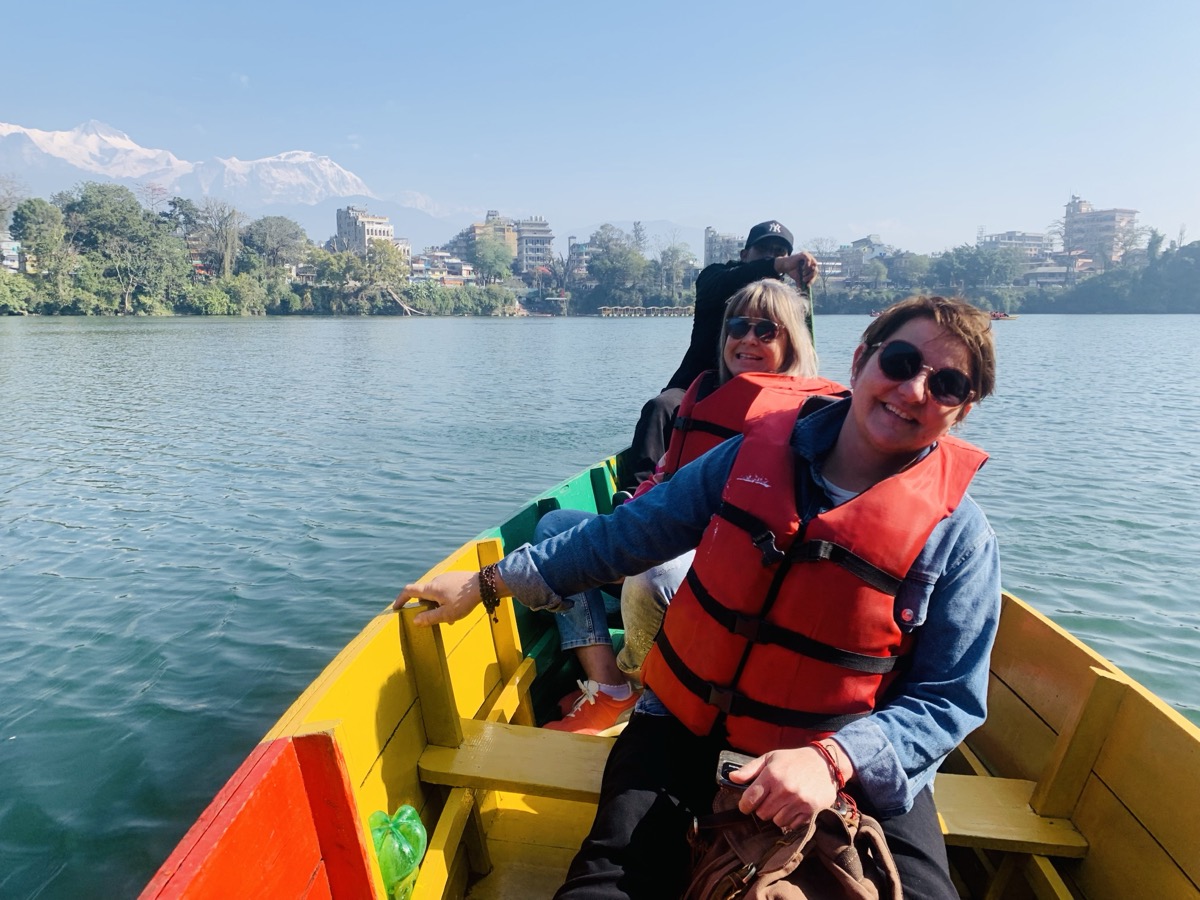
Sarangkot: The Viewpoint Supreme
For the most breathtaking panorama in Nepal, a trip to Sarangkot is non-negotiable. This hill fortress, perched at 1,592 meters (5,223 feet), is the undisputed king of viewpoints. The journey often begins in the pre-dawn darkness, a convoy of vehicles winding their way up the mountain.
Then, as the first light of day touches the horizon, the magic unfolds. The tips of the mountains, from the fishtail of Machhapuchhre to the formidable peaks of Annapurna and Dhaulagiri, are set ablaze with a golden-pink alpenglow. It’s a silent, almost spiritual spectacle that renders everyone—seasoned travelers and first-timers alike—speechless. The slow reveal of the entire range as the sun climbs higher is a memory that will stay with you forever.
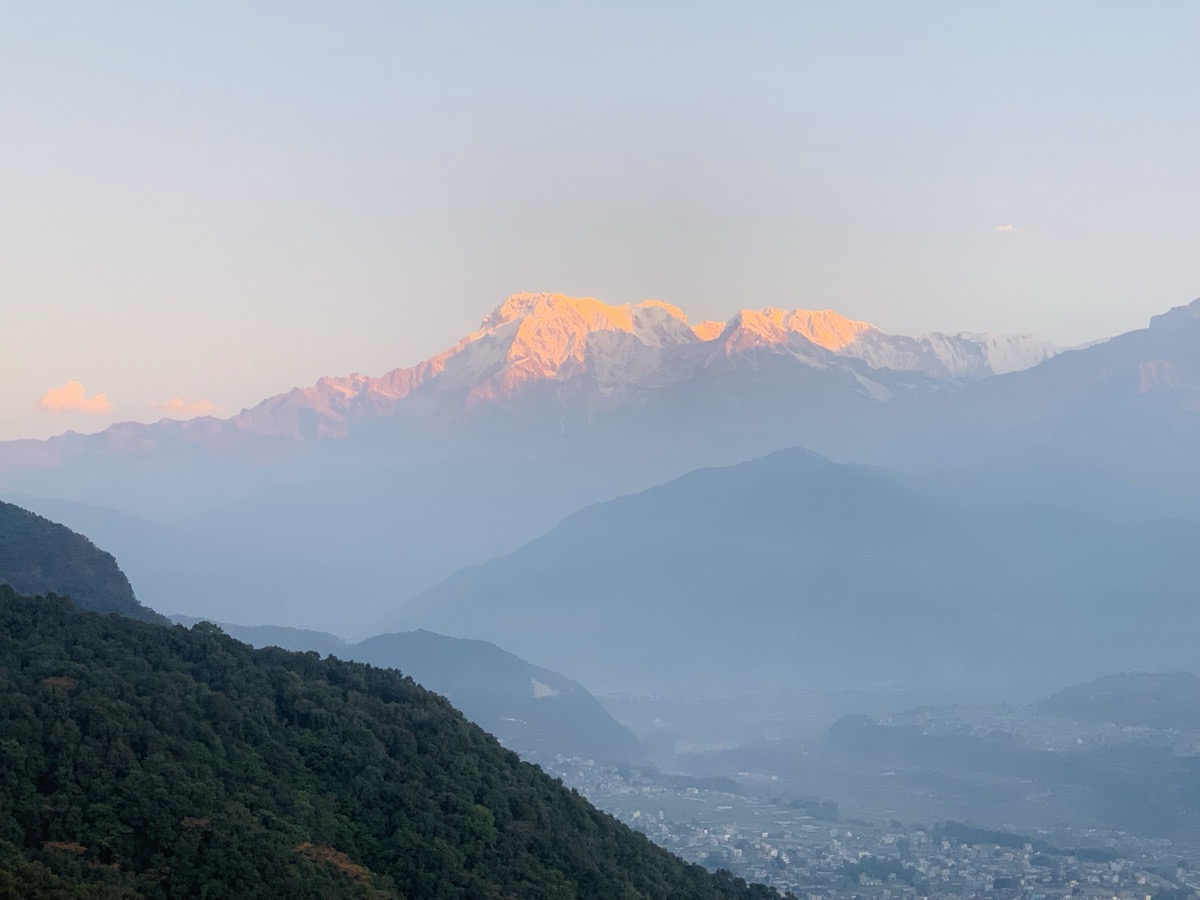
-
Paragliding in Pokhara: For the ultimate Sarangkot experience, why not jump off? Pokhara is consistently ranked among the top paragliding spots in the world. In a tandem flight with an experienced pilot, you’ll run off the hillside and soar on thermal currents like a bird. The sensation of flight is exhilarating, but the view is transcendent. Floating silently above the lake, with the world’s highest mountains as your backdrop, is an experience that borders on the spiritual. You’ll land softly on the lakeside field, your perspective on the world—and on Pokhara—forever altered.
The World Peace Pagoda (Shanti Stupa)
This gleaming white monument, built by Japanese Buddhists, is more than just a beautiful structure; it’s a symbol of hope and a beacon of calm. Perched on Anadu Hill on the southern side of Phewa Lake, it offers a different, more elevated perspective of the valley.
The journey to the pagoda is part of the experience. The most rewarding route involves taking a boat across the lake, followed by a steep but scenic 45-60 minute hike through a beautiful forest. The climb is a workout, but it makes the final arrival all the more satisfying.
When you reach the top, you are rewarded with a stunning 360-degree view. To one side, you see the entire Phewa Lake and the city sprawled out below. To the other, the Annapurna range stands in all its majesty. The pagoda itself radiates a powerful silence, punctuated only by the flutter of prayer flags in the wind. It is, without a doubt, a pocket of profound peace.
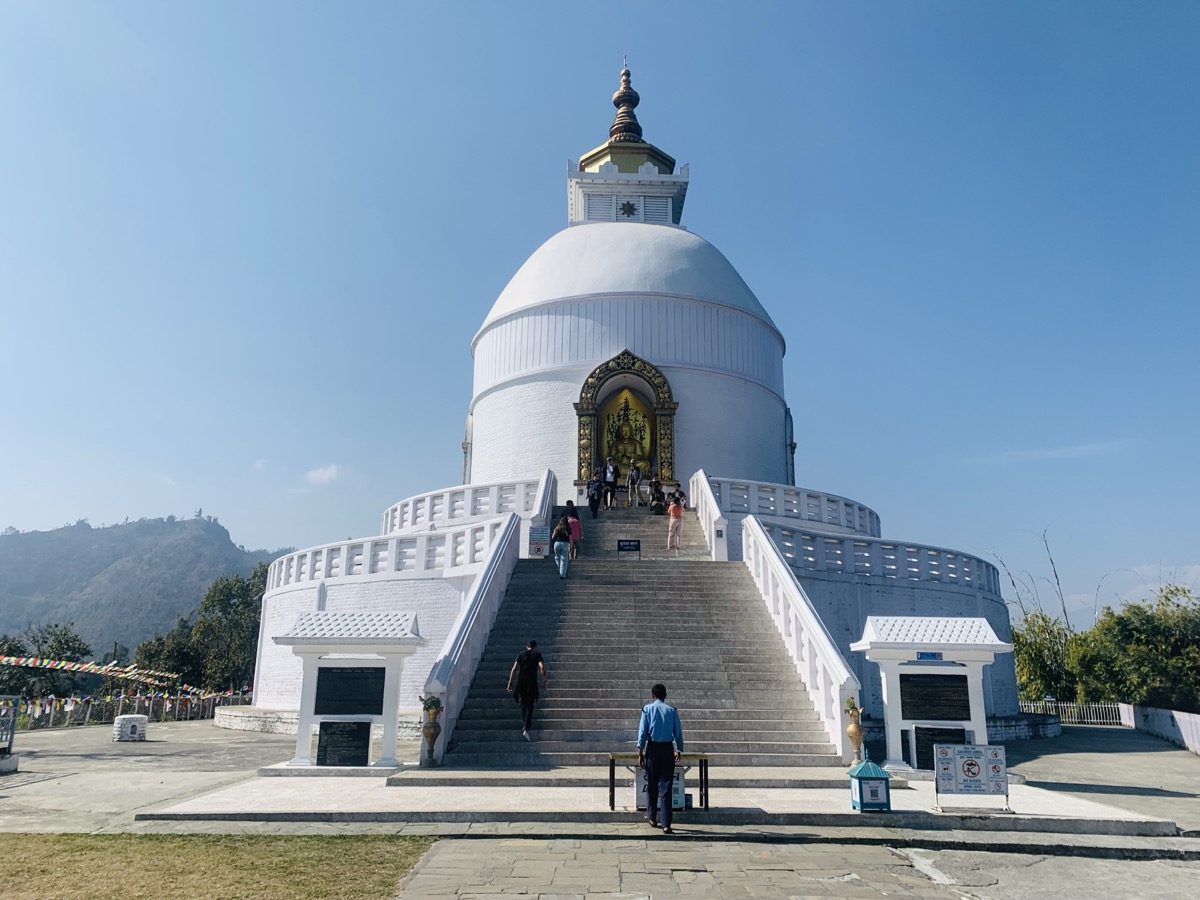
Pumdikot: Scenic Hilltop Escape
Pumdikot is a tranquil hilltop retreat located just a short drive from Pokhara, offering panoramic views of the Annapurna and Dhaulagiri ranges. Known for its serene landscapes and peaceful ambiance, it is an ideal destination for travelers seeking a blend of nature, adventure, and local culture. The hill is surrounded by lush forests, terraced farmlands, and quaint villages, providing scenic walking trails and opportunities for photography.
Sunrise and sunset at Pumdikot are truly spectacular, with the first light illuminating Machhapuchhre and Annapurna, creating breathtaking vistas. Unlike busier viewpoints, this spot offers a quieter, more intimate experience with nature.
The area features a small resort and viewpoint complex, where visitors can enjoy traditional meals, coffee, and even overnight stays. Nature enthusiasts will appreciate the birdwatching and peaceful hikes along rhododendron trails, while adventure seekers can try paragliding with fewer crowds than Sarangkot.
Pumdikot’s combination of tranquility, natural beauty, and cultural charm makes it perfect for a day trip or short getaway from Pokhara.
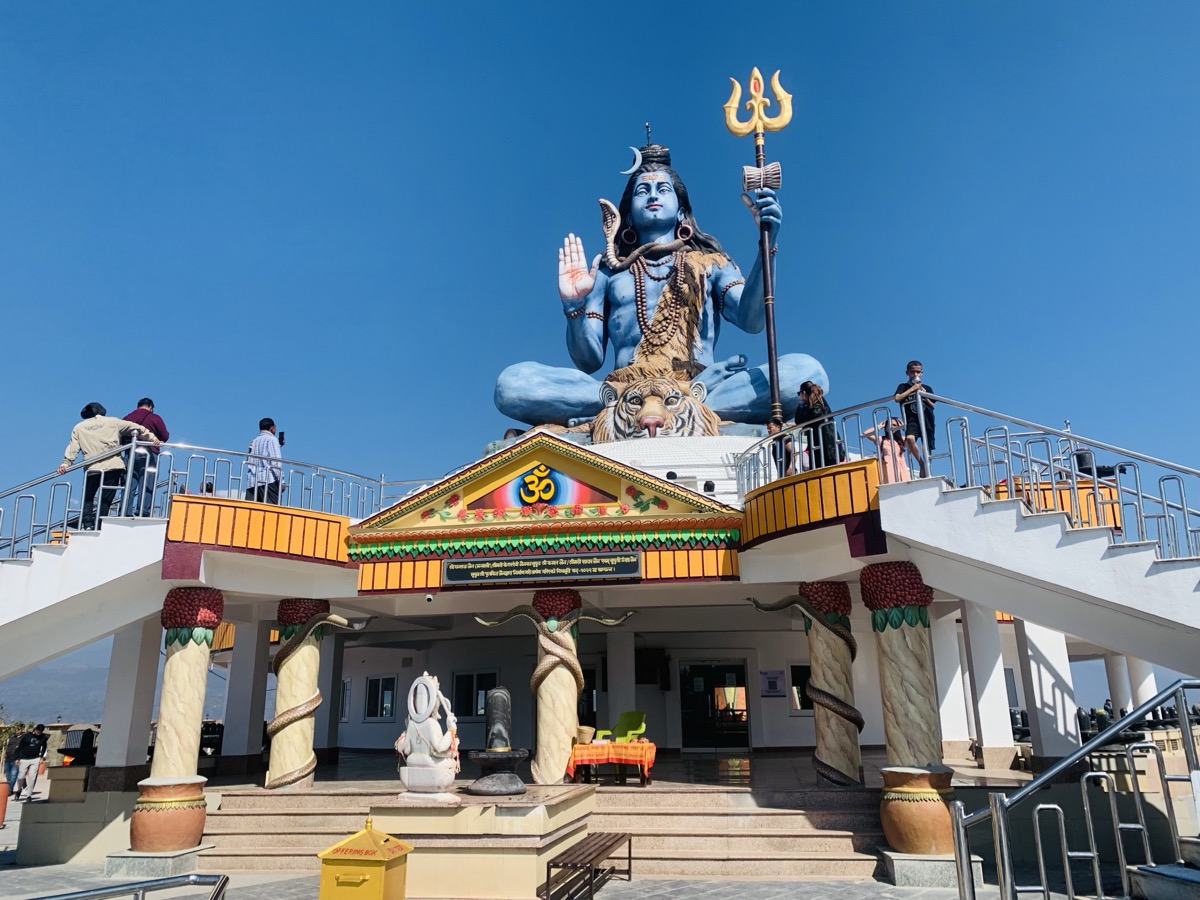
The Underground World: Gupteshwor and Mahendra Caves
Beneath Pokhara’s serene surface lies a fascinating, hidden world of caves carved by water and time.
-
Gupteshwor Mahadev Cave: Located directly across from Devi's Fall, this is a sacred cave dedicated to Lord Shiva. The descent is dramatic, taking you deep underground past fascinating limestone formations. The main attraction is a massive, naturally formed shivalinga that is continuously bathed by water. The atmosphere is dark, damp, and thick with devotion, offering a stark contrast to the open vistas above.
-
Mahendra Cave: Further north, this cave offers a more straightforward spelunking adventure. You’ll need to bend and squeeze through narrow passages, your flashlight illuminating impressive stalactites and stalagmites. It’s less about spirituality and more about the simple, childlike joy of exploration.
Devi's Fall (Patale Chhango)
Right next to Gupteshwor Cave lies Devi's Fall, a powerful and poignant natural wonder. Here, the Pardi Khola river plummets with tremendous force into a deep, narrow gorge, disappearing underground. The name originates from a tragic incident in the 1960s where a Swiss tourist named Davi was swept away by the river's surge.
During the monsoon, the roar and power of the water are truly formidable, serving as a stark reminder of nature’s untamable force. From a viewing window inside the Gupteshwor Cave, you can witness the water crashing down from a unique, subterranean perspective—a surreal and powerful sight.
The International Mountain Museum
Before you set foot on a trail, a visit to this world-class museum is highly recommended. It’s not a dry collection of artifacts but a vibrant, engaging tribute to the Himalayas. The museum provides essential context that will deepen your appreciation for the mountains you see on the horizon.
The exhibits are comprehensive and beautifully presented, covering:
-
The geology and ecology of the Himalayan region.
-
The history of mountaineering, celebrating the triumphs and honoring the tragedies of famous expeditions.
-
The culture, traditions, and daily life of the indigenous Himalayan people.
-
Detailed scale models of the Annapurna and Everest massifs.
It’s an inspiring and educational stop that adds layers of meaning to your entire Nepali adventure.
Bindhyabasini Temple and the Old Bazaar
To experience the "local" Pokhara, venture away from Lakeside to the Old Bazaar area. Here, the Bindhyabasini Temple, one of the city's oldest and most important, sits on a small hill. This white-domed temple is dedicated to Goddess Bindhyabasini, and the air is thick with the smell of incense and the murmur of prayers. It’s a active, authentic place of worship where you can observe Hindu rituals firsthand.
After the temple, lose yourself in the labyrinthine streets of the Old Bazaar. This is the commercial heart of traditional Pokhara, where narrow lanes are lined with shops selling spices, grains, textiles, and metalware. The architecture features charming Newari-style buildings with ornate, carved wooden windows. It’s less polished than Lakeside, but infinitely more immersive and real.
Beyond the City – Day Trips and Treks
Pokhara’s allure extends far beyond its city limits. If you have the time, these excursions offer a deeper, richer experience.
The Sister Lakes: Begnas and Rupa
While Phewa Lake gets all the glory, the twin lakes of Begnas and Rupa, located about 15-20 km east, offer a tranquil escape. This area feels like the Pokhara of a bygone era—rustic, peaceful, and deeply authentic. Surrounded by terraced farms and small villages, the lakes are perfect for a day of quiet boating, fishing, or hiking the trail that connects them. The fresh fish from Begnas Tal is a local delicacy, best enjoyed at a simple lakeside restaurant. It’s the perfect antidote to the tourist buzz of Lakeside.
The Annapurna Sanctuary: Legendary Treks
While multi-day adventures, the treks that begin in Pokhara are the stuff of legend and deserve a prominent mention. The Annapurna Conservation Area Project (ACAP) office in Pokhara is where you’ll obtain your necessary permits.
-
Annapurna Base Camp (ABC) Trek: A classic journey that takes you right into the heart of the mountains, culminating in an amphitheater of towering icy peaks.
-
Ghorepani Poon Hill Trek: A shorter, more accessible trek that is famous for the sunrise view from Poon Hill—a 360-degree panoramic vista of the Himalayas that is arguably the best view-for-effort ratio in the world.
-
Mardi Himal Trek: A newer and less-crowded trail that offers incredibly close, intimate views of Machhapuchhre’s south face.
-
Jomsom/Muktinath Trek: This trek ventures into the rain-shadow of the Himalayas, into the dramatic, arid landscape of the Kali Gandaki valley—the deepest gorge in the world.
- Mohare Danda Trek: Mohare Danda Trek is a scenic trail in Nepal, featuring panoramic Himalayan views, charming villages, rhododendron forests, and a peaceful escape for adventure and nature enthusiasts.
The Adventurer’s Playground
For those who crave an adrenaline rush, Pokhara is Nepal’s undisputed adventure capital.
-
Paragliding: As highlighted, this is a world-class, must-do activity. Tandem flights make it accessible to everyone, offering a perspective of the valley that is simply unmatched.
-
Ultralight Flight: For the ultimate aerial thrill, take an ultralight flight from Pokhara Airport. These small, open-cockpit planes fly you right up to the face of the Annapurna range. It’s an expensive but unforgettable experience, literally flying among the highest peaks on Earth.
-
Zip-Flying: The zip-line from Sarangkot is one of the steepest and longest in the world. It’s a pure, unadulterated shot of adrenaline as you zip at high speed over the hills and forests.
-
Bungee Jumping & Canyoning: While located a short drive outside the city, several operators offer heart-pounding bungee jumps into a deep gorge and canyoning trips that involve rappelling down powerful waterfalls.
-
Mountain Biking: The diverse terrain around Pokhara is a mountain biker’s dream. You can find routes for all levels, from gentle rides along the lake shore to challenging single-track trails in the surrounding hills that offer stunning views and a serious workout.
The Practicalities – A Traveler’s Toolkit
Getting to Pokhara, Nepal
-
By Air: Pokhara’s modern international airport (PKR) offers frequent daily flights from Kathmandu. The 25-30 minute flight is a highlight in itself, providing jaw-dropping, close-up views of the Himalayas. It’s the fastest and most spectacular option.
-
By Road: The journey from Kathmandu via the Prithvi Highway has improved dramatically and now takes about 5-6 hours by tourist bus or private car. The road winds alongside rivers and through hills, offering a beautiful, ground-level view of the Nepalese countryside.
Getting Around Pokhara
-
On Foot: The Lakeside area is compact and very walkable.
-
Taxi: Readily available for longer trips. Always agree on a fare before starting your journey or insist the driver uses the meter.
-
Rickshaws & Cycle Rickshaws: A charming and eco-friendly way to travel short distances around Lakeside.
-
Scooter/Motorbike Rental: A popular and flexible option for exploring the city and its outskirts at your own pace.
-
Local Buses: For the adventurous and budget-conscious, local buses are incredibly cheap and connect all parts of the city.
Where to Stay in Pokhara: Lakeside vs. Damside
-
Lakeside (Baidevi): This is the main tourist hub, buzzing with energy. It boasts the highest concentration of hotels (from budget hostels to luxury resorts), restaurants, bars, bookshops, and gear rental stores. It’s convenient and has everything you need.
-
Damside (Pardi): Just a 10-15 minute walk south of the main Lakeside strip, Damside is noticeably quieter and more laid-back. It often has better, unobstructed lake views and a more relaxed atmosphere, while still being within easy reach of amenities.
Food and Drink in Pokhara: A Culinary Journey
Pokhara’s dining scene is diverse and excellent, catering to every palate.
-
Dal Bhat: The national dish. Don’t leave without trying this wholesome, flavorful combo of lentil soup, rice, vegetable curry, and pickles. It’s the fuel of the Himalayas, and many places offer free refills!
-
Momo: These are Nepalese dumplings, and they are utterly addictive. Steamed or fried, and filled with buffalo, chicken, or vegetables, they are best served with a spicy tomato-based achar(chutney).
-
Newari Cuisine: Seek out a specialized Newari restaurant to try local delicacies like Bara (savory lentil pancake), Chatamari (Newari "pizza"), and various spicy buff (water buffalo) dishes.
-
International Fare: Lakeside is a global food festival. You’ll find exceptional Italian pizzerias, authentic Korean BBQ, hearty Israeli breakfasts, and classic American burgers.
-
Coffee Culture: Pokhara has a thriving cafe scene, with numerous spots serving excellent, locally grown Nepali coffee. It’s the perfect place to journal, read, or simply watch the world go by.
When to Visit Pokhara and How Long to Stay
The Best Time to Visit Pokhara
-
Autumn (October to November): Widely considered the best time to visit. The monsoon has cleared the air, leaving crystal-clear skies, stable weather, and moderate temperatures. Perfect for trekking and sightseeing. (Peak season).
-
Spring (March to April): The second-best window. The weather is warm, and the rhododendron forests on the trekking routes are in spectacular, fiery bloom.
-
Winter (December to February): Days are often sunny and pleasant, but nights can be very cold. Mountain views are often exceptionally clear. Higher altitude treks can be challenging due to snow.
-
Monsoon (June to September): The landscape is lush and green, but heavy cloud cover and frequent rain often obscure the mountain views. This is the low season, so it’s quieter and cheaper, but trekking can be wet and leech-ridden.
How Many Days in Pokhara?
-
2-3 Days: Sufficient to see the main city attractions at a brisk pace: Phewa Lake boating, Sarangkot sunrise, World Peace Pagoda, and the caves.
-
4-5 Days: The ideal sweet spot. This allows time for adventure sports like paragliding, a visit to the museum, a day trip to Begnas Lake, and plenty of time to simply relax.
-
1 Week or More: Essential if you are using Pokhara as a base for a shorter trek (like Poon Hill) or if you want to fully immerse yourself in the city's laid-back rhythm and explore its hidden corners.
Conclusion: The Lasting Echo of Pokhara
In the end, Pokhara’s true magic isn't found on any checklist. It’s in the quiet moments between the sights. It’s the taste of a perfectly steamed momo as the sun dips behind the mountains. It’s the sound of temple bells harmonizing with the laughter of paragliders landing by the lake. It’s the feeling of the cool, thin air on Sarangkot at dawn and the warmth in the smile of a shopkeeper.
Pokhara is a rare place that masterfully balances the thrill of adventure with the depth of serenity. It stirs the blood with the promise of high-altitude treks and paragliding flights, while simultaneously soothing the spirit with the tranquility of its lakes and pagodas. You may come for the legendary mountains, but you will leave with a piece of the lake’s calm and the city’s gentle, welcoming rhythm forever lodged in your heart.
Pokhara doesn’t demand your attention with noise and chaos. It earns your love with a whisper—a whisper of wind over the water, a whisper of prayer flags in the breeze, a whisper that calls you back, long after you have returned home.
Pokhara Travel Guide: Frequently Asked Questions (FAQs)
I’m not a trekker. Is Pokhara still worth visiting?
Absolutely. While it's a trekking hub, Pokhara's core appeal—stunning lake, mountain views, peaceful pagodas, and a laid-back vibe—is accessible to everyone. It's perfect for relaxation, gentle sightseeing, and enjoying world-class scenery.
What is the one thing I absolutely should not miss?
The sunrise from Sarangkot. It is a quintessential Himalayan experience that is worth the early wake-up call. The sight of the sun illuminating the Annapurna range is truly unforgettable.
How do I get a SIM card and is the internet good?
It's very easy. You can purchase a local SIM (Ncell or NTC) at the airport or in any town center with your passport. Pokhara, especially Lakeside, has excellent 4G coverage. Most hotels, cafes, and restaurants offer free Wi-Fi.
What's the best way to handle money in Nepal?
The currency is the Nepalese Rupee (NPR). Lakeside has numerous ATMs that accept international cards. Many larger hotels and restaurants also accept credit cards, but it's essential to carry a good amount of cash for smaller vendors, taxis, and entry fees to smaller attractions.
Is the food and water safe for travelers?
Food standards in tourist-oriented restaurants in Lakeside are generally high. Stick to bottled or purified water. With street food, use common sense and choose busy vendors where the food is cooked fresh. "Dal Bhat" is often a very safe and healthy option.
What is a good off-the-beaten-path day trip from Pokhara?
Head to the Begnas and Rupa Lakes area. It's only about 30 minutes away but offers a much more rustic and peaceful experience than Phewa Lake, with great opportunities for boating, hiking, and enjoying fresh fish.
Is Pokhara a good destination for solo travelers?
It's an excellent choice. The tourist infrastructure is well-established, making it easy and safe to navigate. There are plenty of hostels and guesthouses where it's easy to meet other travelers, and the overall atmosphere is very friendly.
What should I pack for a trip to Pokhara?
Pack layers! The weather can be variable.
-
Comfortable walking shoes are essential.
-
Light layers for daytime, but a warm fleece or jacket for cool evenings and the Sarangkot sunrise.
-
A rain jacket is a smart addition.
-
Sunscreen, hat, and sunglasses—the sun at altitude is strong.
-
A reusable water bottle.
Are there any important cultural norms I should be aware of?
Nepalis are very understanding, but it's appreciated if you try. When visiting temples, remove your shoes and dress modestly (cover shoulders and knees). It's polite to use your right hand for giving and receiving items, especially money. A smile is universally welcome.
How does Pokhara compare to Kathmandu?
They are vastly different. Kathmandu is a vibrant, chaotic, and culturally intense experience—a sensory overload in the best way. Pokhara is its serene, scenic, and relaxed counterpart. Most travelers enjoy a few days in Kathmandu for history and culture before decompressing in the tranquility of Pokhara.
